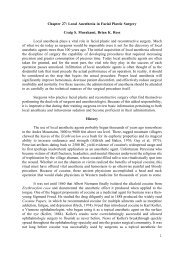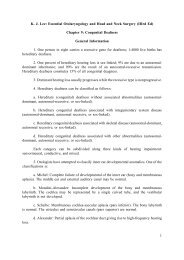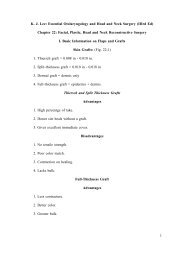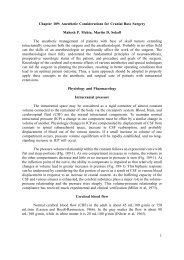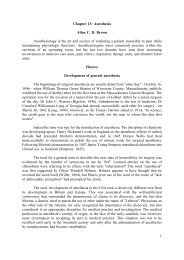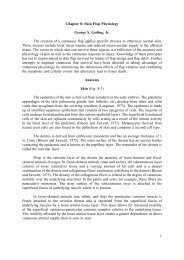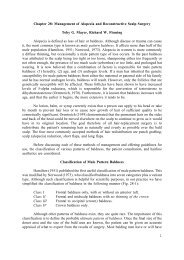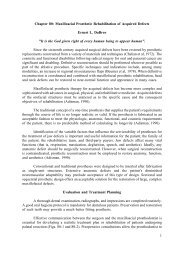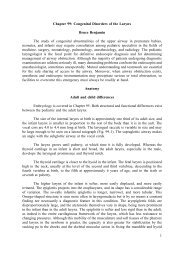Create successful ePaper yourself
Turn your PDF publications into a flip-book with our unique Google optimized e-Paper software.
B. Full primary immunization with booster within 10 years of wound1. Low-risk wound: No toxoid necessary.2. Tetanus-prone wound: If more than 5 years since last dose, give one dose of Td.No toxoid necessary if less than 5 years.3. Wound neglected for < 24 hours: One dose of Td plus 250-500 U TIG.C. Full primary immunization, but no booster doses or last booster dose < 10 years1. Low-risk wounds: One dose Td.2. Tetanus-prone wounds: One dose Td.3. Wounds neglected > 24 hours: One dose Td, plus 250-500 U TIG.NB. Use separate syringe and sites for TIG and toxoid.- Antibiotics: Penicillin G or tetracycline are effective against the toxin-producingvegetative form of Clostridium tetani. The effects of antibiotic therapy alone in preventionof tetanus are minimal but, as was mentioned earlier, the presence of other organisms enhancethe reversion of spores to the vegetation form. Inflammatory oedema due to infection causeslocal tissue hypoxia. Antibiotic therapy will not eradicate the spores of Clostridium tetani andthey may continue to revert to the vegetative form with elaboration of additional toxin. Inserious wounds which continue to be infected, it may therefore be advisable to repeat passiveimmunization with TIG after three to four weeks.Principles of TreatmentOnce tetanus develops, it calls for aggressive medical treatment and meticulous nursingcare. Recovery is almost always assured if the patient can be kept alive for three weeks witheffective supportive therapy, as tetanus is a self-limiting disease.The management is aimed at:- eradication of the organism from the wound to prevent toxin production- neutralization of existing toxin before it reaches the nervous system- reduction of the sensitivity of the nervous system to the toxin.The latter is most important in the event of covulsions and frequent tetanic spasms.General consideration in management include:- Prevention of external stimuli. Any stimulus such as noise or movement should belimited to a minimum, as it may precipitate convulsions. A bladder catheter and nasogastrictube are placed early and routine nursing procedures such as heart-rate counts should belimited. The treatment area should be semi-dark (twilight).- Wound debridement is important but should be delayed until several hours after thepatient has received antitoxin, as free tetanospasmin is mobilized into the bloodstream duringsurgical intervention.45




